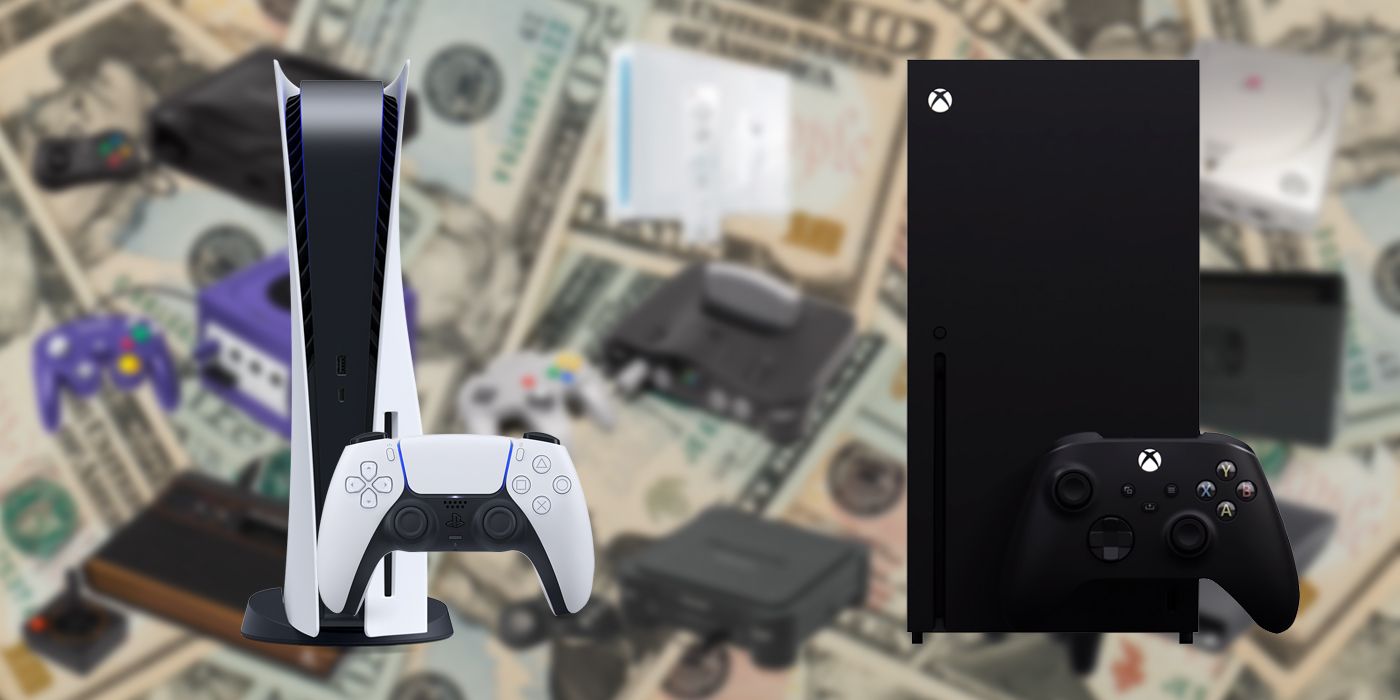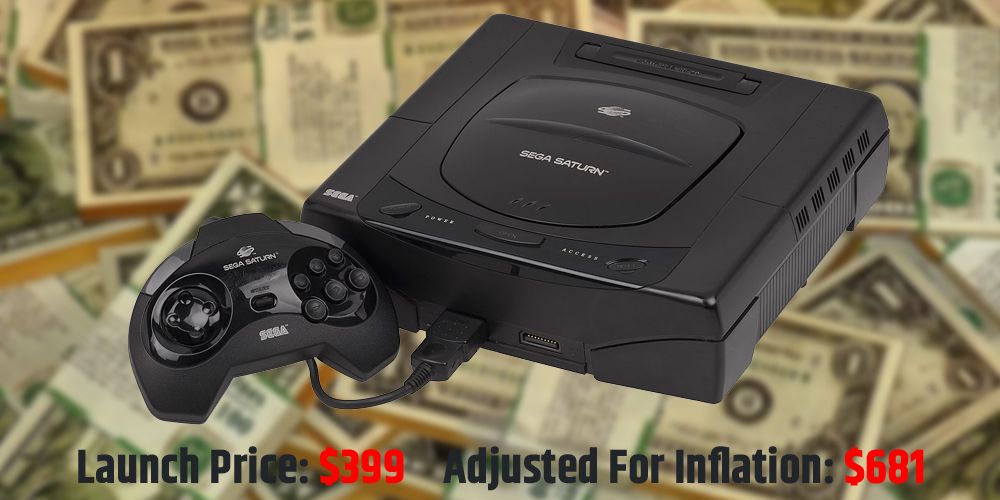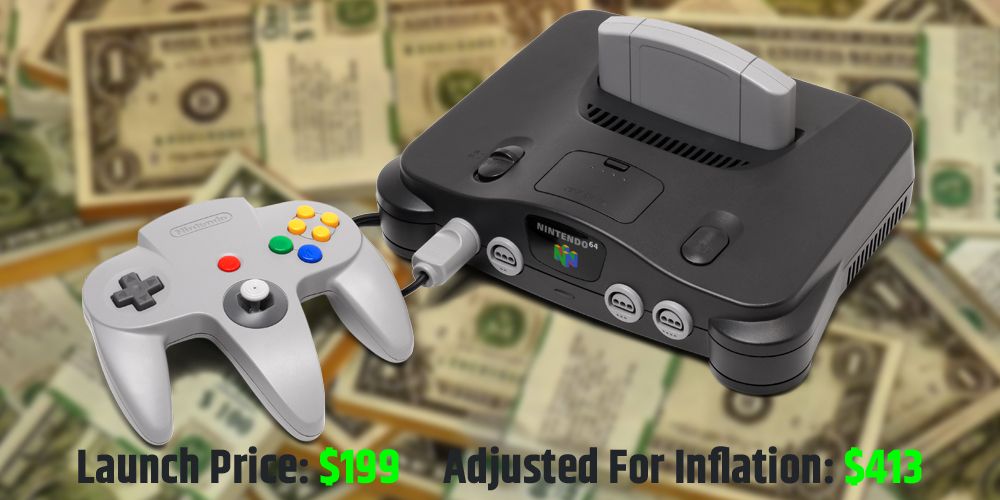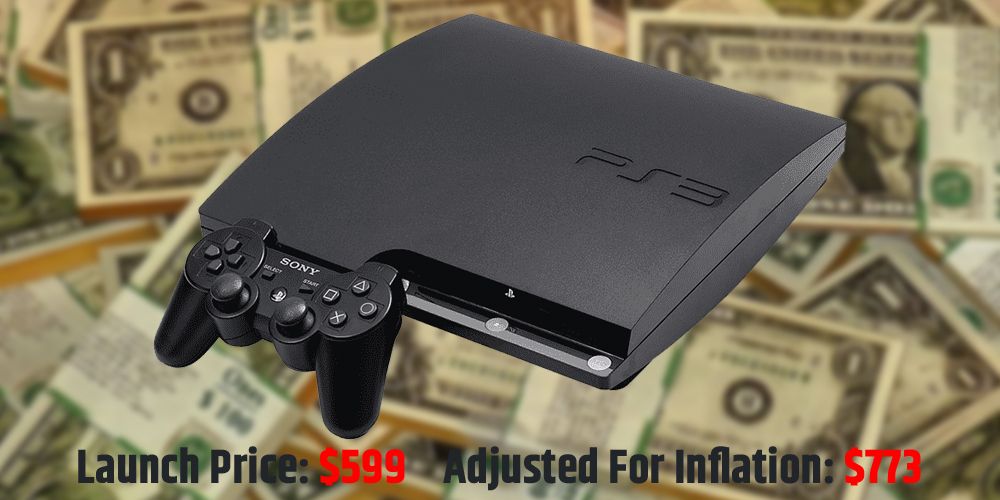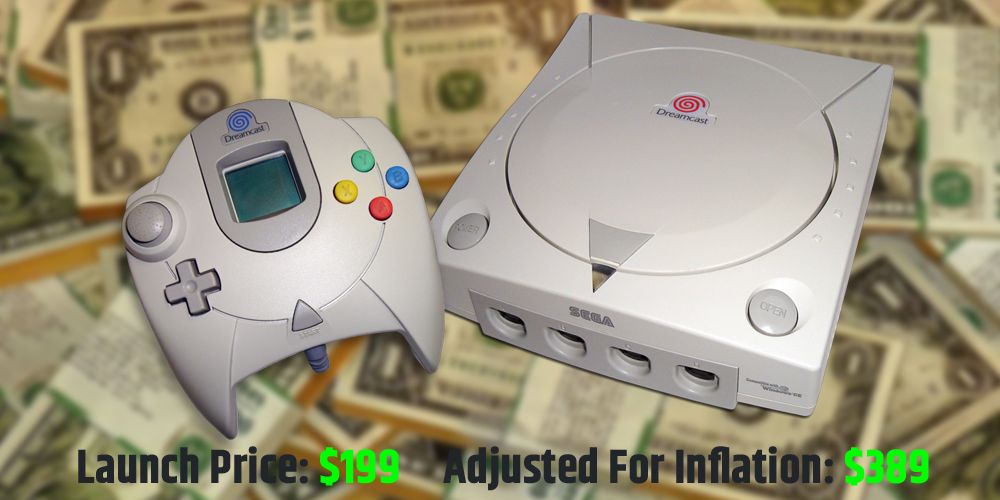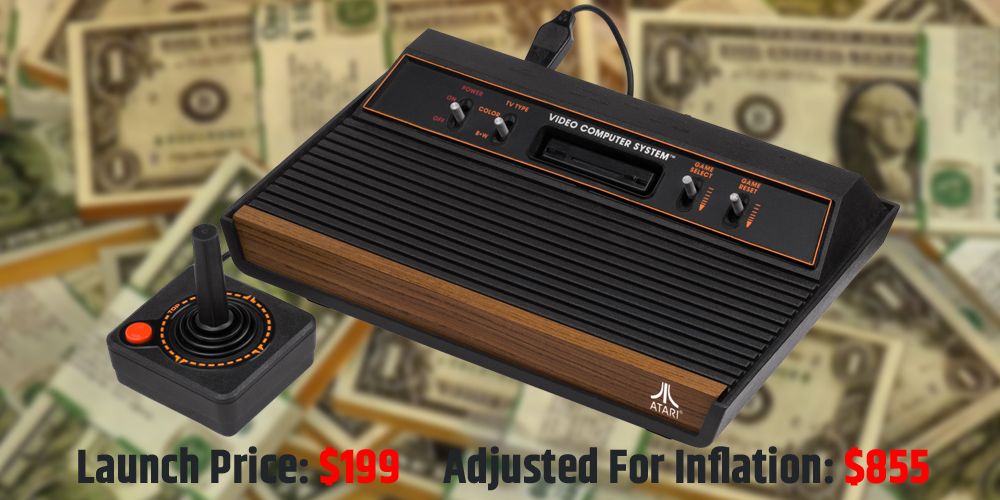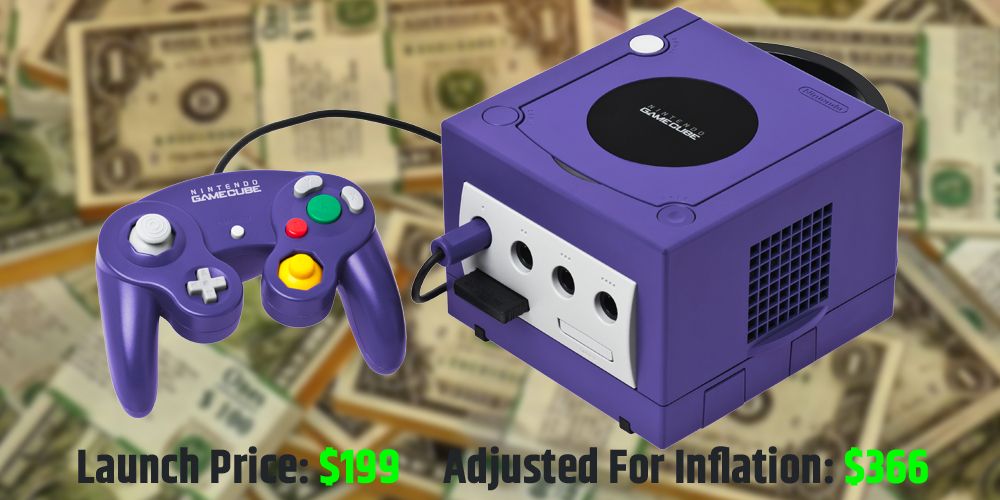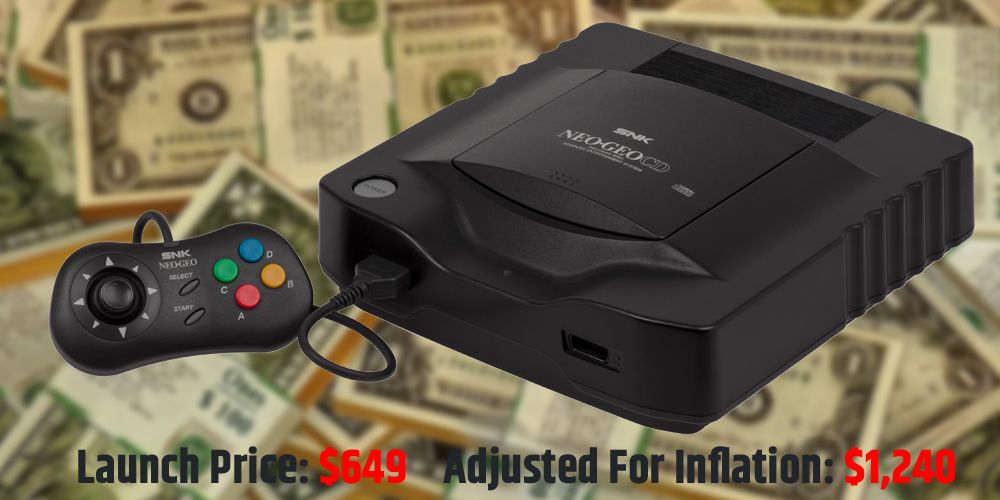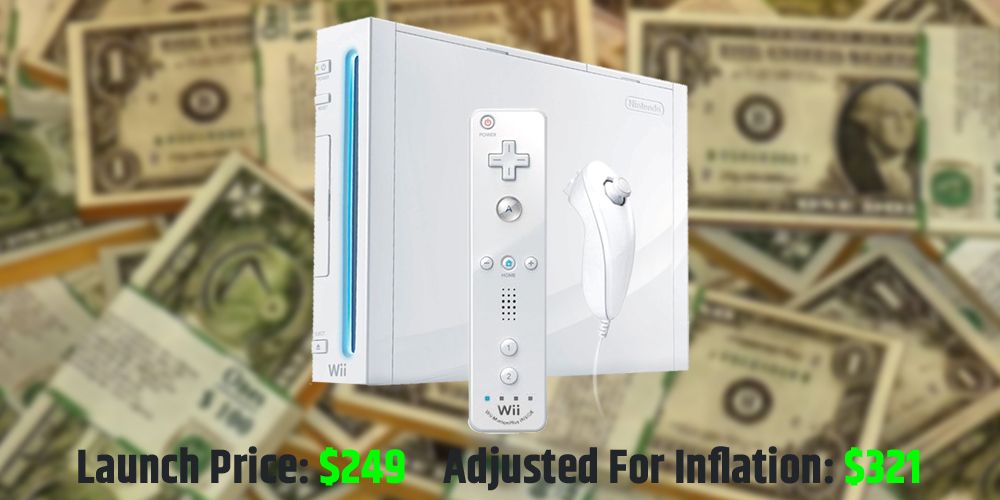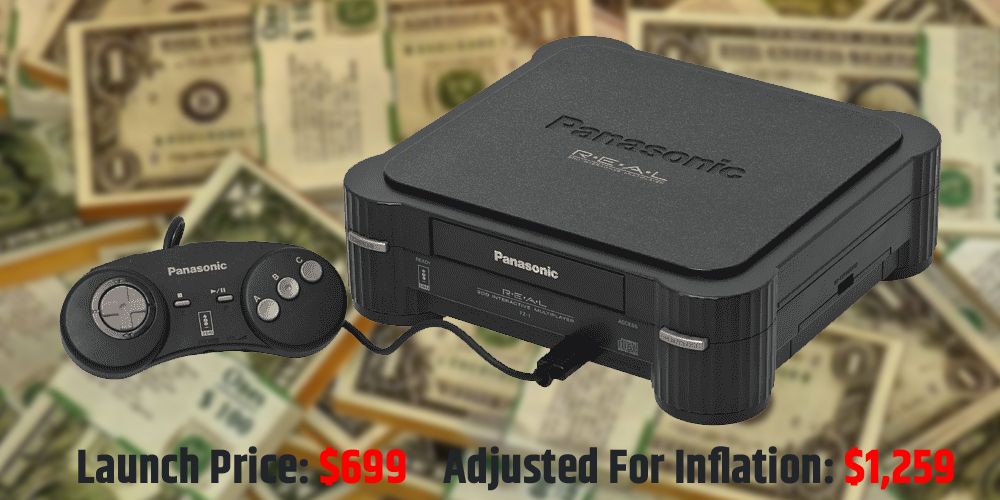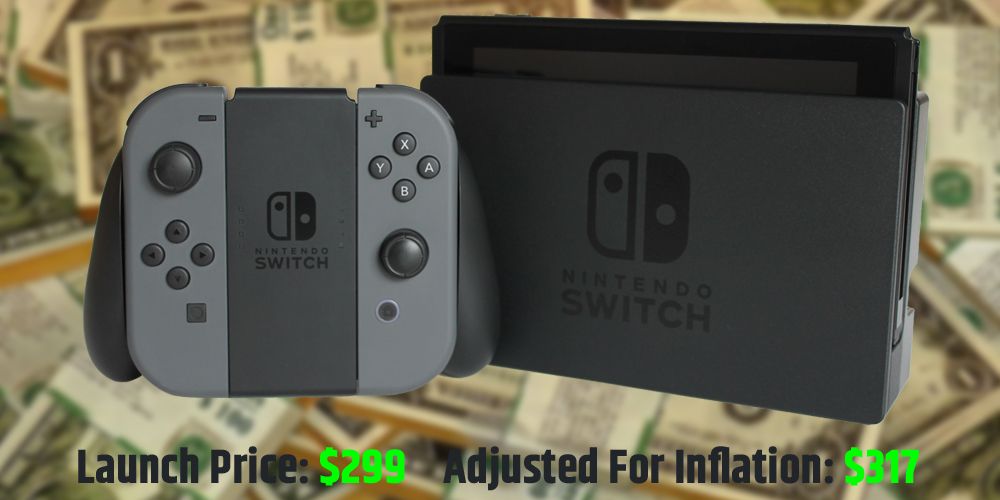After a long wait, the dawn of a new generation is finally upon us and while the prospect of high resolution gameplay is certainly a tantalizing one, it's hard not to notice the systems' unusually high launch prices. Both may offer cheaper alternatives, but the premium versions will set players back an eye-watering $499. At a time when the global economy is on its knees, it's an expense that many can neither afford nor justify.
Bleeding edge graphics are clearly going to demand a premium, but when compared with the cost of a Switch, $499 seems like a pretty tough pill to swallow. Looking back at the consoles of yesteryear though, the pricing of the new machines might not be quite as extravagant as many first thought. Plenty of consoles have launched at a lower price, but the PS5 and Xbox Series X are far from the most expensive.
10 More Expensive: Sega Saturn (05/11/1995): $399 -> $681
The Saturn marked the beginning of the end for Sega's exploits in the console market. Poor support for the plethora of Genesis add-ons combined with the Saturn's ridiculously high launch price led to lukewarm sales worldwide. Worse still for Sega, the upcoming Sony PlayStation would be available for $100 cheaper.
Sony's little grey box outdid the Saturn in every market and would go on to sell around ten times as many units during its lifetime. The Saturn did have a few standout titles, but they weren't nearly enough to help the system to compete with Sony's machine. Sega seemed to recognize this, as the development of a successor to the Saturn began almost immediately after its launch.
9 Much Cheaper: Nintendo 64 (09/29/1996): $199 -> $413
If the Super Nintendo helped to bring video games into North American homes, then the Nintendo 64 is responsible for bringing them into another dimension. Although the Saturn and the PlayStation both dabbled with 3D gaming, it was the N64 that finally cracked the formula. As a result, it's the home of some of the best and most influential video games ever created.
Games like Mario 64 and Banjo Kazooie helped to set the standard when it came to 3D-Platformers while The Legend of Zelda: Ocarina of Time's tight controls and expansive world made it a must have title. The N64 was also the first mainstream console to offer native four player support and features some of the best multiplayer games of the era.
8 More Expensive: PlayStation 3 (11/17/2006): $599 -> $773
The PlayStation 3 is the only one of Sony's machines not to have been the best selling console of its generation. While there are a variety of reasons for this, its high launch price undoubtedly played a part. It cost $200 more than the Xbox 360 at launch and was more than double the price of the Wii. Given that the former provided a far superior online gaming experience, it's perhaps no surprise that the PS3 struggled to make the same impact as Sony's other consoles.
It is worth noting that a 20Gb version of the console was also available at launch, but at $499, it was still more expensive than the competition. Adjusted for inflation, the cost of a PlayStation 3 with 20GB of storage was a little over $644.
7 Much Cheaper: Sega Dreamcast (09/09/1999): $199 -> $389
The Dreamcast was Sega's last ever console and arguably its very best. With a built in modem, native 4 player support and a wonderful library of games, there's a lot to love about the Sega Dreamcast. It was a console that was years ahead of its time and one that, on paper at least, should have been incredibly successful.
Despite the console's many strengths though, it was destined to fail from the very beginning. Poor support for previous consoles and a strained relationship with Electronic Arts played a big part in this, but it was the PlayStation 2 that provided the final nail in the coffin. Its ability to play DVDs and larger library of games made it a far more attractive proposition, even if it did cost a little more.
6 More Expensive: Atari 2600 (09/11/1977): $199 -> $855
Atari was once a huge player in the home console market. As pressure from Japanese consoles grew however, they slowly but surely slipped out of the race. The Atari 2600 was arguably their greatest achievement, with more than 30 million units sold throughout the system's lifetime.
The console shipped with two joysticks and a combat cartridge, with eight additional games available at launch. Classic titles like Asteroids, Space Invaders and Pac-Man played a huge part in the system's popularity and remain popular even to this day. Although the death of the Jaguar led to Atari bowing out of the hardware market, the impact that the company had on gaming is undeniable.
5 Much Cheaper: Nintendo GameCube (11/18/2001): $199 -> $366
The GameCube was the first Nintendo console that didn't feature a Mario game at launch since the NES back in the mid-eighties. It's perhaps this that lead to such underwhelming launch sales even in spite of the system's competitive pricing. It also released just three days after the more powerful Xbox, which certainly didn't help.
Despite its impressive catalog of first-party titles, things didn't get much better for the GameCube. In total, it sold fewer than 21 million units during its lifetime, making it the worst-selling Nintendo home console at the time. Although the Wii-U now holds that title, it was still a bitter blow for Nintendo. Sega may have fallen, but Microsoft's Xbox was very much on the rise.
4 More Expensive: Neo-Geo (07/01/1991): $649 -> $1,240
The Neo-Geo started life as an arcade cabinet but was made available to consumers in the early 90's. The technology inside was incredibly impressive for the time, which led to an experience far superior to those provided by other home consoles. This technology came at a price though and, at $649, it was considerably higher than that of the competition.
Even with its high price though, it's estimated that the Neo-Geo was able to sell more than a million units. It's a relatively small number on paper, but given the niche market for such a device, it's pretty impressive. It also holds the distinction of being the first home console to make use of a removable memorable card, which is something that would not become standard until the launch of the PlayStation several years later.
3 Much Cheaper: Nintendo Wii (11/19/2006): $249 -> $321
After the underwhelming performance of the GameCube, Nintendo needed something big to reaffirm its status as one of the world's leading console manufacturers. While the competition focused on graphics though, Nintendo decided to try something a little different. According to the Japanese company, motion controls were to be the next big thing.
The Nintendo Wii was a huge success, taking its place in living rooms all over the world. Games like Wii Sports helped to show off the capabilities of motion control technology while the console's low launch price made it incredibly accessible. Some saw the use of motion controls as little more than a gimmick, but to many, it was yet another example of Nintendo's ability to innovate in a crowded market.
2 More Expensive: 3DO (10/04/1993) $699 -> $1,259
Despite being Time Magazine's 1993 Product of the Year, the 3DO never came close to gaining a foothold in the hugely competitive console market. Although incredibly powerful, there was only a single game available when the console went on sale. What's more, due to its ridiculously high launch price it was far too expensive for the average gamer.
The price of the console did eventually fall thanks in large to a series of hardware revisions that made it cheaper to produce. Even at a lower price though, it struggled to compete with the likes of Sega and Nintendo. The successful launch of the Sony PlayStation a few years later all but killed any remaining chance that the 3DO had of commercial success and it was discontinued in early '97.
1 Much Cheaper: Nintendo Switch (03/03/2017): $299 -> $317
Nintendo might not have the most powerful consoles on the market anymore, but they invariably have the cheapest. As it happens though, the Switch is actually one of Nintendo's most expensive consoles before inflation is taken into account. Even so, it's still significantly cheaper than its competition.
Functioning as both a handheld and a home console, the Switch has been incredibly successful. Despite launching 4 years later than its rivals, it has already outsold the Xbox One and continues to make ground on the PS4. If the rumors of a Switch Pro turn out to be true, the chances of it going on to overtake the PS4 seem incredibly high.

